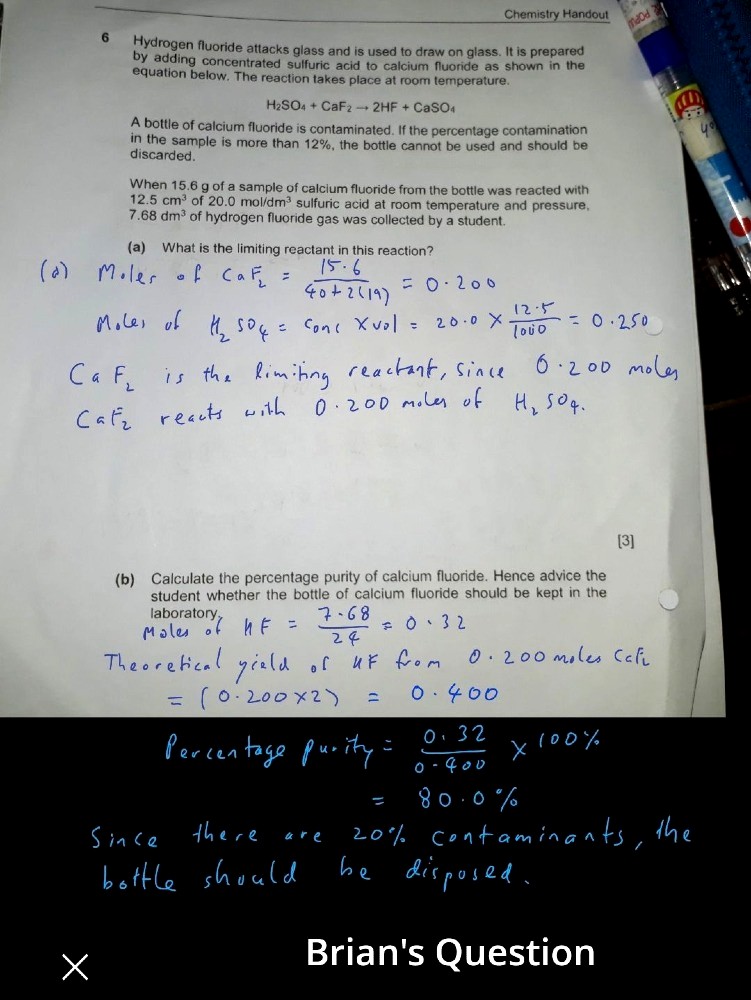Arnold K H Tan's answer to Brian's Secondary 3 Chemistry Singapore question.
I was thinking of part (a) for a while, with the same results, though I have a slightly different point of view.
*** Part A ***
I did not use the 15.6 g figure immediately as the 15.6 g of the sample does not necessarily contain 15.6 g HF.
12.5 cm3 of 20.0 mol/dm3 H2SO4 is equal to 0.25 mol of H2SO4.
7.68 dm3 of HF gas is equal to 0.32 mol of HF gas.
Based on the molar ratio 1 H2SO4 : 2 HF, inputting 0.25 mol of H2SO4 should result in a theoretical output of 0.5 mol HF.
However, only 0.32 mol of HF is obtained, leading to only 0.16 mol H2SO4 being used (out of the 0.25 mol H2SO4 present) based on the same ratio.
This means H2SO4 is in excess since not all of it is used up, and so CaF2 is the limiting reagent.
*** Part B ***
Based on the molar ratio 1 CaF2 : 2 HF, 0.32 mol of HF obtained must have come from 0.16 mol of CaF2.
Since the Mr of CaF2 is 40 + 2 x 19 = 78,
0.16 mol of CaF2 corresponds to 12.48 g of CaF2.
Percentage purity = 12.48/15.6 x 100 = 80.0% resulting in 20% contamination rate.
*** Part A ***
I did not use the 15.6 g figure immediately as the 15.6 g of the sample does not necessarily contain 15.6 g HF.
12.5 cm3 of 20.0 mol/dm3 H2SO4 is equal to 0.25 mol of H2SO4.
7.68 dm3 of HF gas is equal to 0.32 mol of HF gas.
Based on the molar ratio 1 H2SO4 : 2 HF, inputting 0.25 mol of H2SO4 should result in a theoretical output of 0.5 mol HF.
However, only 0.32 mol of HF is obtained, leading to only 0.16 mol H2SO4 being used (out of the 0.25 mol H2SO4 present) based on the same ratio.
This means H2SO4 is in excess since not all of it is used up, and so CaF2 is the limiting reagent.
*** Part B ***
Based on the molar ratio 1 CaF2 : 2 HF, 0.32 mol of HF obtained must have come from 0.16 mol of CaF2.
Since the Mr of CaF2 is 40 + 2 x 19 = 78,
0.16 mol of CaF2 corresponds to 12.48 g of CaF2.
Percentage purity = 12.48/15.6 x 100 = 80.0% resulting in 20% contamination rate.



